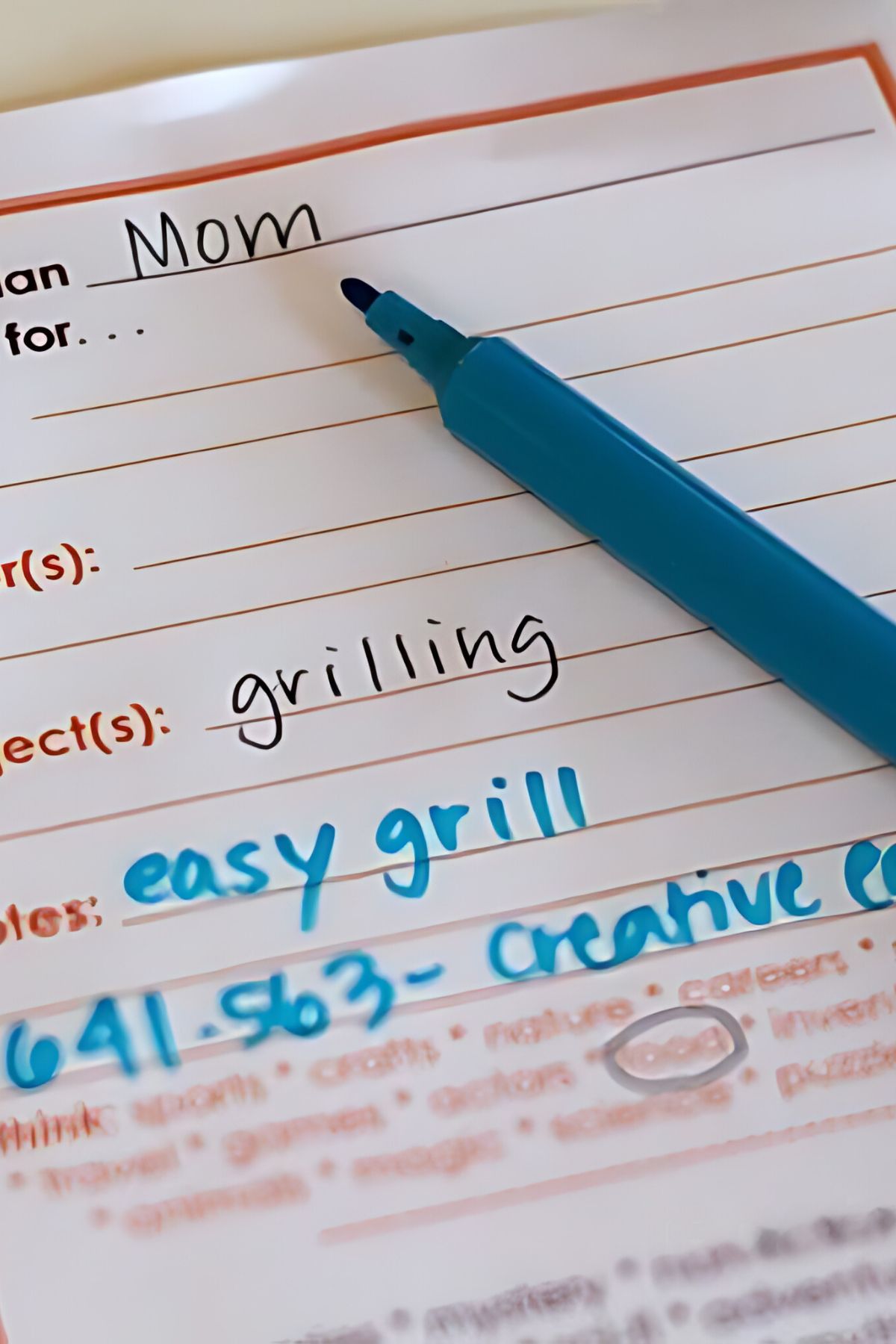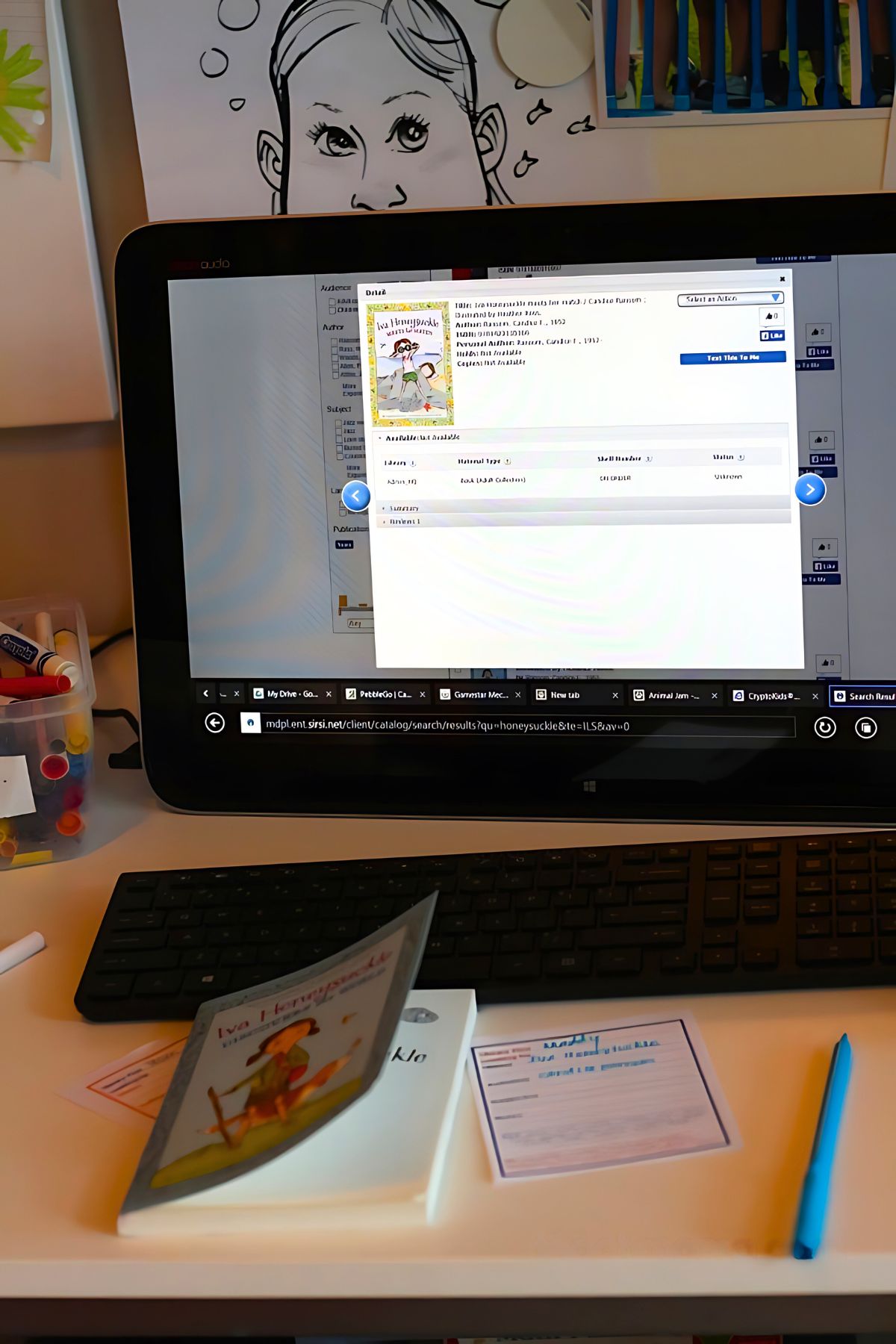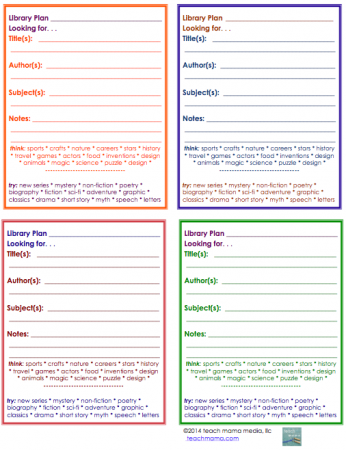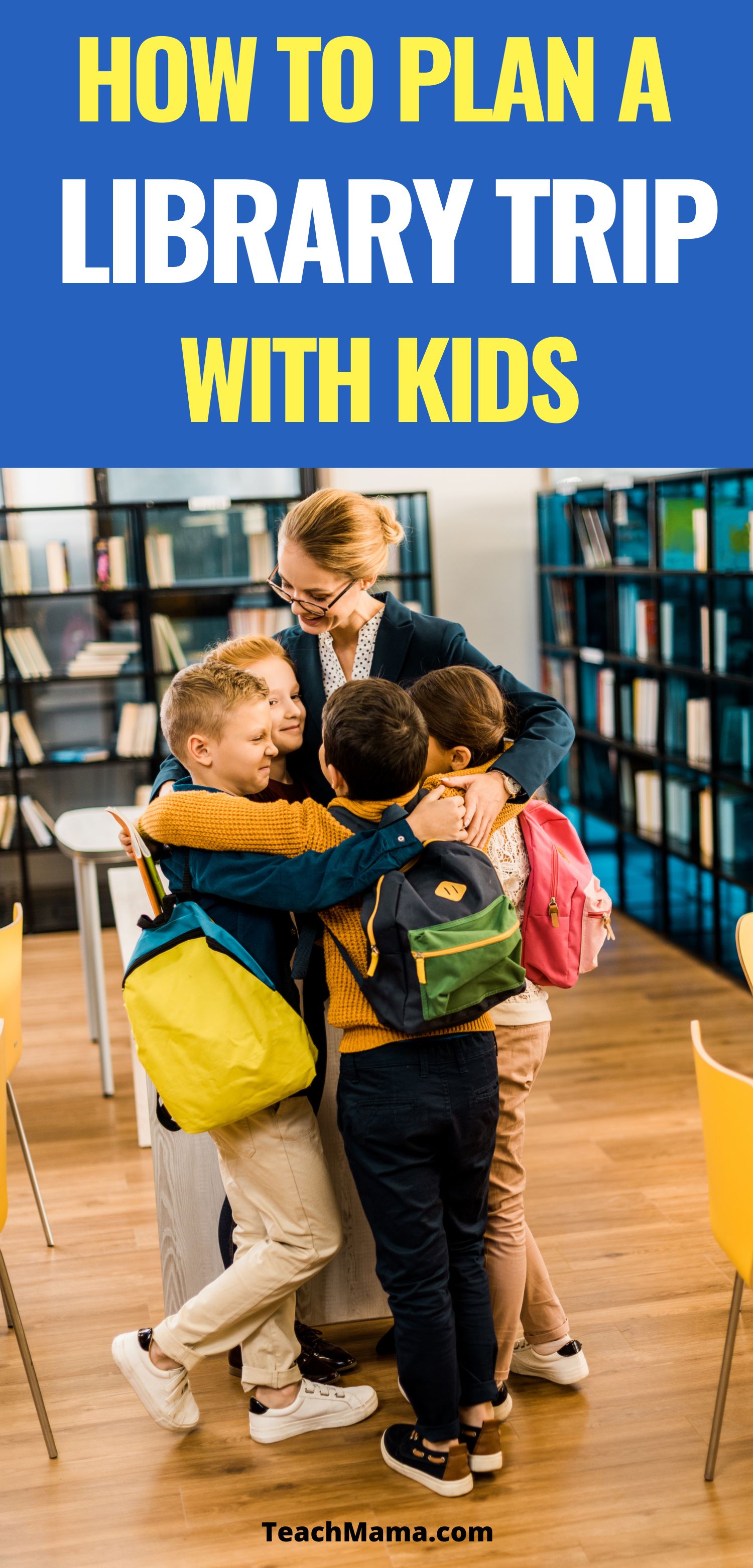With a small amount of planning you can give your kids an easy fun way to focus on what they need or want and not be overwhelmed by all the choices available when you make your trip the library.

Kids can be a little exuberant when it comes to picking out books at the library. All of them look so amazing! Publishers spend quite a lot of money making sure they do so it should come as no surprise when our kiddos collect a stack of books taller than themselves to check out. I know that’s how libraries and bookstores effect my family.
Plan Ahead

Talk About Books and Topics Ahead of Time
What they are interested today is a great place to start. Little Mermaid came out when our daughter was five, we researched oceanography. My dad talked about his WWII experiences with our boys, we researched WWII.
We were going to Colonial Williamsburg so we read all kinds of things about the American Revolution. Each kiddo had their own fields of personal interest too so those books were often in our checkout pile.
Make a Note of Interests
You can use the Library Plan cards to make note of topics for future library trips. At first (and with younger kids) you’ll need to help them fill out their cards, but eventually they can do this step on their own. What if they don’t have a clue at all? That’s totally fine. There are categories and suggestions on each card.
Check Out the Online Catalog Before You Go
At one point we lived in a fairly small town, but it had three college libraries, the main library and a couple of branches. The online catalog was certainly helpful in telling us if any of the libraries had the book we were looking for, but also where it was.
Using the online catalog also allows you to go armed with the book’s call letters and author. Having those really reduces the search time and is especially appreciated if you end up needing a librarian’s assistance.
Know Your Child’s Approximate Reading Level
This is really for no other reason than to know whether your child will be able to read the book independently or need your assistance. Independent or recreational reading level is slightly below their instructional reading level. So if your child picks a book you perceive as being too easy for them that’s likely the reason.
Be Aware of the Age/Reading level of Your Kids’ Choices
- Early (easy) Readers for 4-6 year olds. These may include wordless or low word count picture books.
- First Chapter Books and some Graphic Novels for 6-9 year olds.
- Middle Age Novels and Graphic Novels for 8-12 year olds
- Tween Novels and Graphic Novels for 10-14 year olds
- Young Adult Novel and Graphic Novels for 12-18ish year olds
The purpose of this list isn’t to tell your child they can’t (or must) read a book based on their age, but rather to give you some idea of what would be most helpful, readable and age appropriate for them. The graphic novel that would be acceptable and interesting to a 16 year old would most likely be totally beyond to wildly inappropriate for an eight year old.
When You Are at the Library
When the book is located you can tuck the card in like a bookmark. If a different title is substituted make the change on the card first. Then after checkout mom or dad collects the cards. I know many libraries print out a list of the checked out books these days, but some don’t.
Keeping the Library Plan cards will give you a record of what your child read and when. But most importantly, when it comes time to round up all the books to turn them in you will know what you’re looking for!
Setting Book Limits
You may want to set a limit for the number of books each child is allowed to check out. We never did this. The down side of that, of course, comes when it’s time to return the books. If your family has checked out 80+ books on oceanography chances are pretty good you won’t be able to round them all up to turn them in on time. The library fines can become epic. Ask me how I know.
Book Reports
Encourage (or even require) your kids to talk about what they are reading. This can be done informally, like at dinner or while they are helping in the kitchen or while you’re catching rays in the back yard. But maybe your kids would occasionally like to make a bigger deal out of reporting by doing something extra.
Some ideas for that might include making a model, writing a poem, drawing a picture, or doing a play or puppet play and sharing it with the family. Make even the reporting FUN. Reporting also helps children learn and practice the important skill of summarizing. The back of the card would be a great place to summarize the book.

Record for Reference
If you keep your child’s cards in a file of some sort (repurposed box, on a d-ring etc) they or you can refer back to it to remember the books they liked when they were 7 or for remembering where they read something or what books they liked so much they might enjoy owning a copy.
As a mom of now adult children, I really enjoy finding examples of their childhood writing with all the misspellings, backward letters and random capitalization.
You can grab your own free printable download of the library plan by entering your email in the box below. Happy reading!

Even More Language Arts Fun!
- Fun Ways to Practice Summarizing with Kids
- Wordless Riddles Lunchbox Notes
- Halloween Word Search Printable
PIN THIS FOR LATER


I love this idea! May I link it to our local library?
yes, yes! absolutely, lisa! totally appreciate you reading and thank you THANK YOU for a link back!
I’m going to try this!! Especially using it with the catalog for my going to 4th grader. He’s at the point that he knows what subjects he likes but doesn’t know how to locate them. Will try having him write down call numbers and author names to help him find books quicker. Will use your form exactly as is for him.
Now for my Little Missy… ! It’s another story. Going to 2nd grade, but very, very scattered and unfocused. She goes to shelves and pulls off a book, and pushes it back in. I watched her do this to 10 books in a row and then asked why she was putting them all back. She said “I didn’t like it”. Then it came to me– she was literally judging the book by it’s cover. She never opens a single one and will spend 20 minutes (I timed her once) just pulling books off, never opening them. So for her, I think I’ll make the sheet simpler: just a subject that she’s interested in and then help her find titles. I already made a rule that she HAS to open each book and read the first 3 pages to decide if she likes the book. If I’m not watching her, though, she reverts back to her old habits.
CeCe–AWESOME! I love how you can adapt it for each child. . . maybe I should make a more simple one for younger kids. Let me know what you decide to do. I’d love to see yours if you’ve made it!
I love this form! I’m going to try it with my classes at different grade levels this year. I’m a media specialist in an elementary building. Thanks for sharing it!!
you are SO welcome, Sharon! If you can make any suggestions as to how I can improve it, let me know–always trying to make things work better!